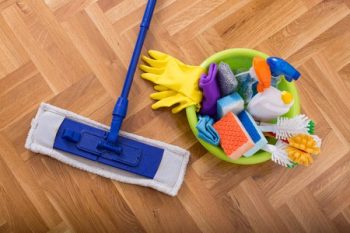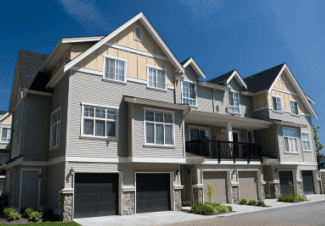7 Mold Preventative Maintenance Steps For Kitchens And Bathrooms
Mold preventative maintenance for your rental property is the maintenance checkup this week, provided by Keepe. Knowledge about what causes mold growth and mold preventative maintenance is key to guaranteeing a safe, healthy living environment for tenants.
Property managers need to know not only causes of mold growth, but how to prevent it in certain parts of the rental property.
What makes a room mold-friendly?
Mold only grows and thrives in spaces that present its ideal living conditions, especially basements, bathrooms and kitchens.
To prevent mold from forming and continue growing, it’s fundamental to address the elements causing a certain environment to become mold-friendly.
-
- Simply cleaning up a moldy area won’t be effective on the long run. Mold will eventually grow back.
-
- Mold that is easy to see and smell (molds generally smell musty and earthy) indicates an advanced state of mold growth. Living spaces where mold is easily visible must be treated as soon as possible.
-
- Moisture and ventilation are the factors to consider first when aiming to eradicate a mold problem. Piping, HVAC and insulation should then become some of the first elements to inspect upon discovering mold.
-
- Preventive maintenance projects can help you achieve a safe and mold-proof space while also addressing lingering maintenance issues that you might be overlooking.
7 basement mold preventative maintenance steps
Basements provide ideal living conditions for mold to grow and thrive. They are dark, humid and not ventilated. Low air flow and high moisture are the main culprits aiding mold to form.
1. Monitoring humidity levels. The more humid a basement is, the more mold-friendly it becomes. Our experts recommend utilizing a hygrometer to measure humidity levels. Make sure they do not surpass readings of 45% or higher, which can indicate excessive humidity.
2. Reducing high humidity levels via insulation. It is important to check the insulation of all piping located in proximity of the basement. Make sure to have a professional plumber repair any loose insulation or leaks. Second, exposed pipes – which typically exhibit condensation during the cold seasons – should be insulated by a professional, which removes extra moisture.
3. Reducing high humidity levels via water drainage. It is fundamental to have an effective water drainage system. Direct water away from the property: if your property is already experiencing flooding and poor drainage after rain and seasonal weather, it is a clear sign that the property’s drainage system is ineffective, which could lead to even more severe structural issues.
4. Reducing high humidity levels from appliances. Appliances like washers, dryers, heaters and air conditioners should have their exhaust systems be checked to guarantee that they are properly functioning. They should be directing exhaust away from the property’s interiors and pushing moisture outside.
5. Avoid moisture-absorbing flooring. Carpet and wooden flooring absorb moisture and remain damp. This creates the perfect living condition for mold. It also contributes to the overall humidity of the space. It is best to substitute carpet and wooden flooring with more impermeable flooring, such as tiles, linoleum, or natural stone.
6. Improve ventilation. Having an exhaust fan installed allows to proper ventilation of basements. It is also recommended to open windows regularly to air out the space. Our experts recommend hiring an HVAC specialist. The specialist can perform an evaluation of the rental property’s ventilation capacities and suggest necessary improvements.
7. Bonus Tip. Inform tenants about why being mindful of humidity and ventilation is essential to ensure optimal mold prevention. Very simple steps can be taken by tenants to avoid creating mold-friendly conditions. Our mold experts suggest avoiding drying clothes and growing houseplants in the basement, which contributes to raising humidity levels and welcoming mold growth.
6 bathroom mold preventative maintenance steps
Bathrooms present plenty of damp spaces for mold to growth. Resolving lingering moisture is the first step for preventing mold.
1. Monitoring humidity levels. Just like for basements, the more humid a space is, the more mold-friendly it becomes. Humidity levels over 45% indicate excessive indoor humidity.
2. Repairing leaks. Considering the significant volume of water being used daily, bathroom fixtures and piping can easily develop leaks. Those leaks will result in moist areas that welcome mold growth. It is important to promptly turn to a professional who can repair the leaks. Additionally, it is always wise to schedule seasonal plumbing checks. You want to make sure that pipes are in good shape and no hidden leaking is taking place.
3. Improving ventilation. Moisture can linger if the ventilation system is not allowing air to circulate. Circulation can speed up drying times for residual water in showers, bathtubs, sinks and any other “splash zones.” It is ideal to have an HVAC specialist assess the ventilation efficiency of your property’s bathroom. Ensure the bathroom exhaust fan is working properly.
4. Replace moldy caulking. If you notice mold growing on the caulking or sealant of bathtubs and showers, our experts encourage completely stripping the moldy layer and having a professional re-caulk the area. This will ensure that the mold growing in the area will be completely removed, thus eliminating the likelihood of leftover spores starting a new growth.
5. Avoid moisture-absorbing furnishings. Furnishing and decorating bathrooms with moisture-absorbing materials can impact the overall level of moisture. It’s best to avoid wallpaper and turn to a specialist for sealing unsealed wood countertops.
6. Bonus Tip. Encourage tenants to use exhaust fans when they take showers or baths. This will allow for condensation and lingering moisture to be removed. Additionally, it’s best if bathtubs and showers are kept as bare as possible. Mold can grow and hide in damp loofahs, sponges, brushes and bottles of shampoo and shower gel.
6 kitchen mold preventative maintenance steps
Abundant plumbing and cooking-related moisture increase the availability of moist spaces for mold to easily grow.
1. Actively check for and repair leaks. Leaking sinks and pipes create new moist areas for mold to easily grow in. It’s important to ensure that leaks are repaired as soon as possible. It is ideal to schedule seasonal rental property maintenance checks to make sure that there are no hidden leaks or damaged, leak-prone pipes in the property.
2. Check cabinets. Kitchen cabinets that house or are found in proximity of main pipes are likely to entrap moisture. This is true especially if they are made of moisture-absorbing material, like unsealed wood. We recommend having a plumbing professional evaluate whether the location of pipes and the material of kitchen cabinets are adequate for your kitchen.
3. Check the garbage disposal. Older and faulty garbage disposal systems will often fail to allow wet food scraps to be properly flushed and disposed. The garbage disposal then becomes a dark, wet, and organic material-filled space for mold to grow in. Repairing a broken garbage disposal as soon as it exhibits issues can prevent the mold.
4. Seal permeable surfaces. Countertops and cabinets generally take up the majority of the space in the kitchen. Some materials are prone to absorbing moisture more easily than others. Choosing materials for your countertops and cabinets is an important process. Our experts find that wooden countertops – or butcher block – have been known to rot due to lingering moisture. This can be prevented by regularly sealing the countertops. Overall, it’s always recommended to consult a maintenance professional about the maintenance needs of your rental property’s kitchen countertops and cabinets. Following the suggested procedures and checkups is the best way to avoid wear and tear on the long run.
5. Bonus Tip. Remind tenants that cleanliness should always be a priority when it comes to the kitchen. Making sure that dirty dishes, food scraps and food in general are not left out will decrease the likelihood of mold to grow on organic material. Spills – especially under and behind fixtures and countertops – should be cleaned up promptly. Food should be always stored mindfully.
Summary
Mold preventative maintenance is a serious issue. Mold can compromise the health of tenants and the overall safety, appeal and look of a rental property. Molds and fungi can develop into parasitic growths harmful to humans in their indoor living spaces. The Centers for Disease Control and Prevention (CDC) warn about the dangers of mold exposure. Mold can significantly worsen respiratory conditions and cause severe rashes, irritation and infections for those with weakened immune systems or respiratory conditions. The Institute of Medicine (IOM) similarly linked indoor mold exposure to the development of coughing, wheezing and reported difficulty with breathing by otherwise healthy people. Not only is this harmful, but it can quickly get out of hand: mold can grow rapidly when it is not addressed immediately.
Source: rentalhousingjournal.com
















 Accessibility
Accessibility